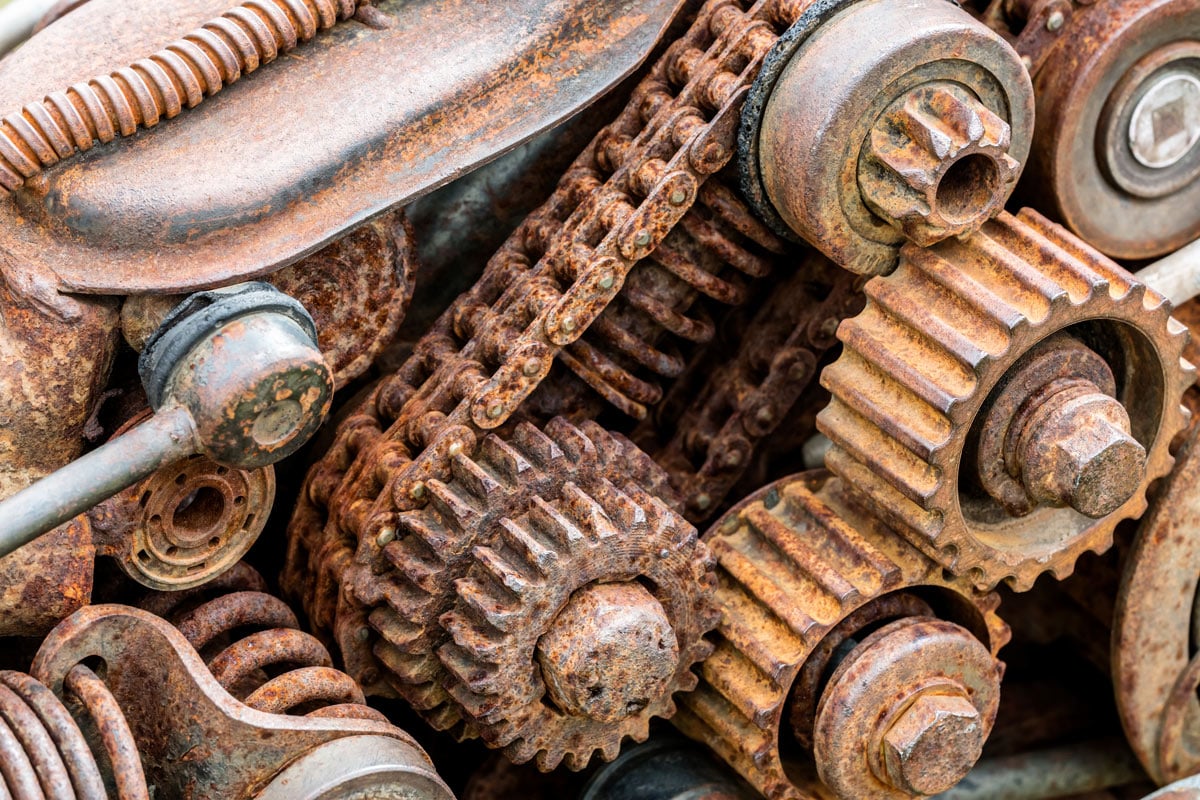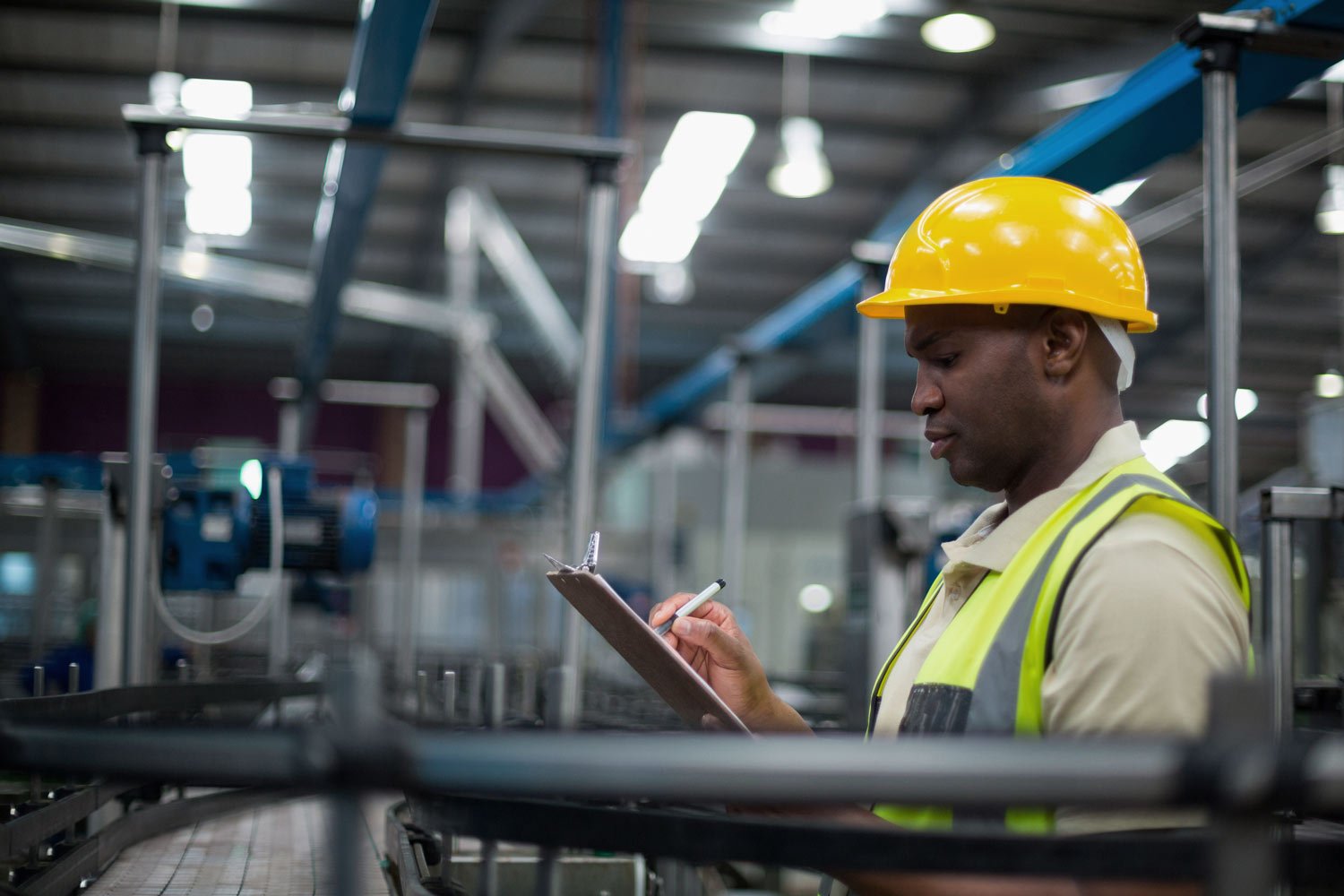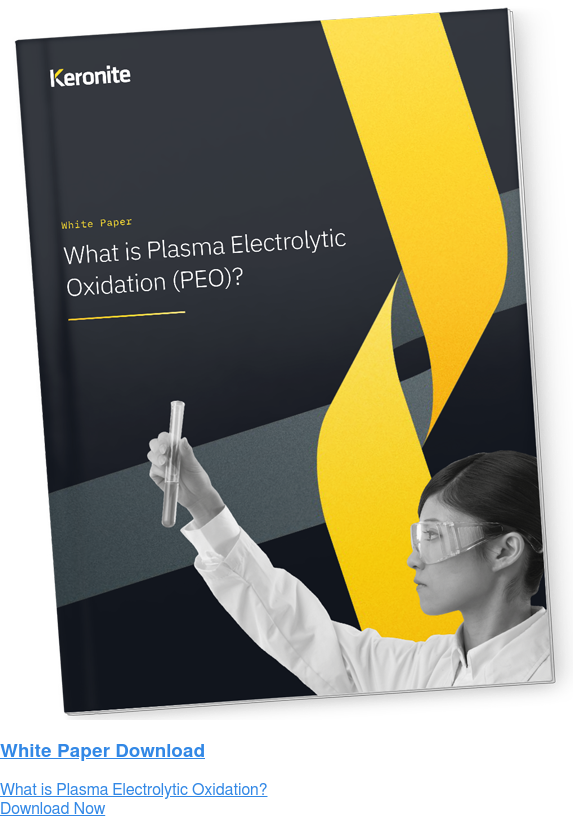Report: The real cost of industrial corrosion
14 May 2020All machinery is susceptible to corrosion; from construction and mining machinery; to elevators, conveyor systems; hoists, cranes and metalworking tools.
While advances in materials science may have come some way to reducing the impact of corrosion; exemplified by water filtration systems, corrosion inhibitors and cathodic systems; corrosion is still predicted to cost the global economy around $2.5 trillion annually, according to an IMPACT study by the National Association of Corrosion Engineers.
According to that report, more than a fifth of this cost is footed by the industrial sector, and, as we at Keronite can attest, these costs manifest in numerous ways, including:
Machine Downtime
The most immediate cost of corrosion is machine downtime.
Corrosion can damage factory machinery in all sorts of ways, each making components much more prone to failure. The deteriorating effect of corrosion can compromise the integrity of vital materials, causing factory machinery to fail temporarily or permanently.
Failed factory equipment can result in a company being forced to undergo ‘downtime’ - which puts all manufacturing processes on hold. The consequences of downtime can reverberate across an entire supply chain.

Downtime can damage a business's bottom line significantly due to various factors; including production losses, under utilised labour, as well as wider ramifications through the supply chain. For perspective, the average automotive manufacturer loses $22,000 per minute of downtime.
Equipment replacement
Severe pitting, galvanic corrosion, crevice corrosion and cracking; as well as corroded valves or corrosion leakage are all signs machinery is unserviceable and needs to be repaired or replaced.
Replacement due to corrosion can account for significant losses - which negatively impact a business's bottom line. Factory equipment is notoriously expensive, and footing the bill twice due to corrosion will undermine any projected ROI figures.
Corrosion of factory equipment will also likely damage nearby components. Corroded parts can cause leakages that might, for example, undermine vital electrical equipment. The costs associated with corroded machinery, therefore, are exponential.
Overdesign
Factory machinery ought to perform to a specified standard as cost efficiently as possible. It should perform necessary processes without being overly energy intensive, or too complicated to use.
Equipment that is designed to mitigate the impact of corrosion is often overly complex, thereby reducing its overall efficacy; this is exemplified in anti-corrosion systems built into heat exchangers, which can reduce heat exchange rates significantly.
This results in inefficient equipment, excessive material use, complicated operation, as well as a reduction in factory space; costing businesses money and impacting their bottom line.

Contamination
Corrosion can be the undesirable impact of contamination, leading to product failures; such as ionic contamination that causes circuit boards to fail. If a certain product is contaminated then all goods may need to be recalled.
What’s more, if a businesses manufacturing processes are found to environmentally damaging - potentially a consequence of corroded factory equipment - it is possible that they will face legal penalties or even be forced to shut down operations.
What's the solution?
The costs of corrosion are felt all across the manufacturing sector globally. Machinery in aqueous or acidic environments are particularly prone to failure due to corrosion.
Factory equipment that easily succumbs to corrosion is a burden to financial health and therefore not a worthwhile investment. Businesses are looking for equipment that is protected against corrosion even in the harshest of factory environments; equipment that is able to meet the demands excessive wear, chemical exposure and extreme temperatures, while retaining optimal efficiency.
The battle against corrosion is best fought with advanced surface coating technologies. As new manufacturing techniques begin to make strides, manufacturing machinery needs to be up to scratch. This is instigating an industry-wide rethink into the materials they use and the coatings that protect them.
Materials scientists at Keronite create coatings for light alloys by using an innovative process called plasma electrolytic oxidation (PEO). These coatings can be tailored to specific applications that require a unique mix of protective characteristics – including protection from corrosion. We’ve even created corrosion-resistant coatings for aerospace manufacturers that allows magnesium to be used in new and exciting ways.

 Keronite is now part of the CWST engineered coatings business.
Keronite is now part of the CWST engineered coatings business.